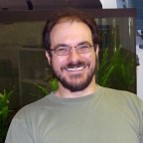
University of Alberta Department of Chemistry
After completing an undergraduate degree in Environmental Chemistry at the University of Waterloo in 1999, Dr. Harynuk joined the newly-formed research group of Tadeusz Górecki also at the University of Waterloo, becoming one of the first Canadian researchers to begin studying the new and exciting field of comprehensive two-dimensional gas chromatography (GC×GC). Over the course of his graduate work, Dr. Harynuk developed several modulators for GC×GC and invented a new mode of operation for GC×GC, termed stop-flow GC×GC, and conducted the first systematic studies into column overloading effects in GC×GC.
Dr. Harynuk completed his PhD in December of 2004, and in January 2005 took up a position with the Australian Centre for Research on Separation Science at the Royal Melbourne Institute of Technology in Melbourne, Australia working with Philip Marriott. While there he continued studies into GC×GC applications and theory. The research group introduced the use of short primary columns for fast GC×GC and simultaneously became the first group to use cold-on-column injection for a GC×GC separation. They also introduced the concept of the Modulation Ratio – a term that relates the width of a peak eluting from the first dimension to the modulation period. This allows one to quickly and easily evaluate the extent of modulation in a separation and compare the modulation between separations.
In May 2007, Dr. Harynuk found himself at the University of Alberta, starting up a new laboratory with one summer student (Andrew Kwong), and in the fall of 2007 The Harynuk Group became official with one undergraduate (Justin Anderson) and three graduate students (Aleisha Rosse, Bryan Karolat, and Nikolai Sinkov).
Awards:
- Young Researcher Travel Award, 31st ISCC&E, Albuquerque, NM, Nov. 28-30, 2007
- Best Poster Award, (Fast GC×GC with Short Primary Columns) Asianalysis VIII, October 16-20 2005, Taipei, Taiwan
- Universisty of Waterloo W.B. Pearson Medal (June 2005).